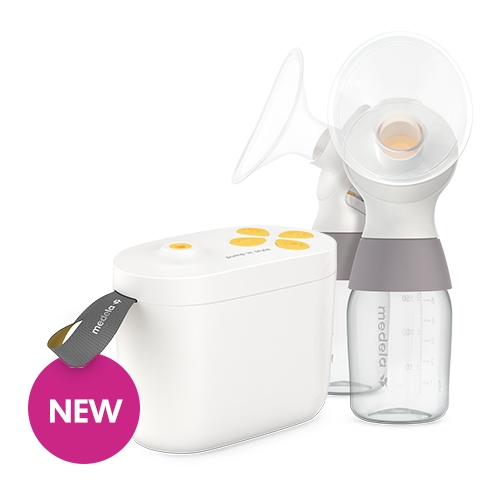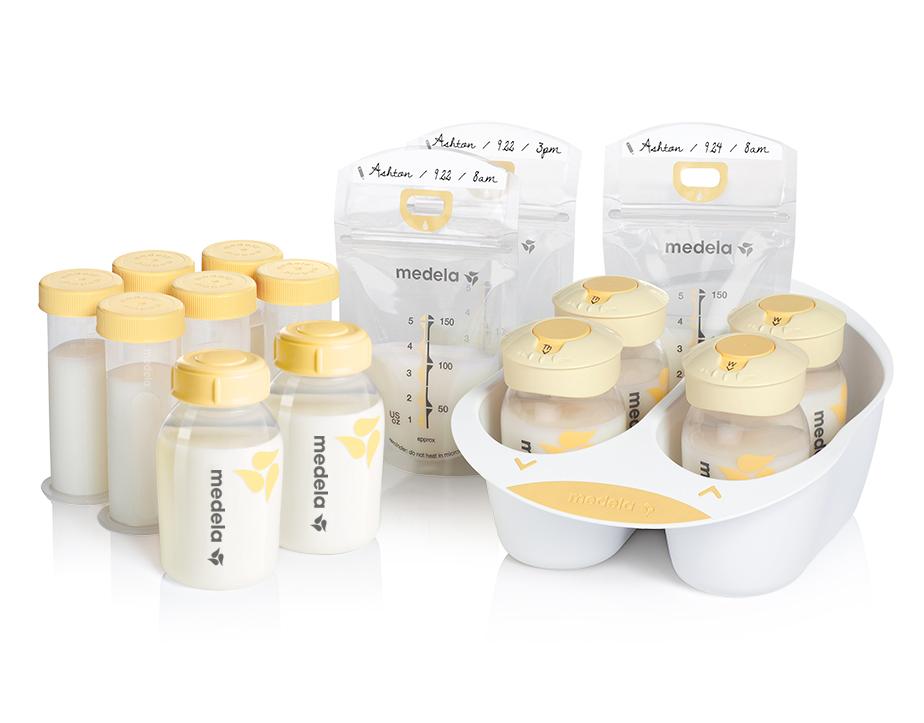Understanding Breastfeeding Disparities
Although breastfeeding is an amazing experience that provides paramount nutrition for your newborn, it can also be a difficult journey filled with an array of emotions and challenges. My breastfeeding journey went well because I had the education, the equipment and the support. However, I am cognizant that breastfeeding can be challenging, tiring and frustrating. As a lactation consultant and a neonatal nurse, I am aware of the benefits that breastfeeding offers mom and baby. Despite these benefits women of color, particularly Black women have the lowest breastfeeding duration and initiation rates.
Recognizing that breastfeeding can help decrease some of the health disparities that black women face, I feel compelled to speak about my role as a lactation consultant, and discuss utilization of Medela products that can help increase the initiation and duration rates in the black breastfeeding community.
I became a lactation consultant after years of witnessing how beneficial expressed breastmilk was to the fragile NICU population. From decreasing the risks of respiratory illnesses,allergies and gastrointestinal diseases, breastmilk is truly the gold standard. Breastmilk is filled with essential nutrients and provides antibodies. In addition, breastfeeding creates a bond between mother and baby that can’t be duplicated.
After the birth of my son, and going through my own journey, I decided to become an International Board-Certified Lactation consultant (IBCLC) with the purpose of encouraging and inspiring women of color to breastfeed. My goal is to provide support, evidenced based information and education while addressing the challenges related to initiation and duration of breastfeeding.
Common Breastfeeding Challenges
Most of my clients are first time mothers who have a desire to breastfeed. They are often referred through an agency, word of mouth or social media. For the most part, they have already met with a lactation consultant while in the hospital. Visits consists of discussing their goals and feasible ways to achieve them. Whether they want to exclusively breastfeed, pump or both, a care plan and accessible resources are given at the end of the visit. The services are provided in clinics or in the comfort of the mothers’ home and are covered by most insurance companies. This allows me to see a wide range of women from a diverse socio- economic and cultural background. The most common issues are, latch related, low milk production and the ability to pump at work.
PROPER LATCH
Latch related issues are common and can have a great affect on your milk production. Often, when the latch is poor, it’s because it is not deep enough. Your baby needs to have both the nipple and the areola (pigmented skin around the nipple) in order to begin milk flow. The difference between a proper an incorrect latch is noticeable. A rhythmic suck, swallow breathe pattern is apparent, lips are everted and not turned inward. A poor latch is often indicated by nipple pain and in the long run cracked nipples. To prevent this, breaking the latch and repositioning is necessary.
Milk production
The more you nurse, the more milk you make. This is the most common sentence shared with my clients. Coupled with hydration, rest and a proper diet, milk production can be sustained for an extended period of time. I think the concern arises because mothers are not able to quantify the amount of breast milk given. We are drawn to numbers and are visually persuaded. While you may not know how much your baby is eating, here are some indicators of a sufficient supply; urine output, behavior post feed and adequate weight gain.
Ability to pump at work.
According to the Centers for Disease Control and Prevention one of the reasons black women struggle to breastfeed is because they return to work earlier. Finding the balance to meet the demands of breastfeeding and work can be challenging. Some work place environment are not covered under the Family and Medical Leave Act, preventing women to properly establish breastfeeding before returning to work. Although laws have yet to be changed, there are ways to maintain milk production while at work.
Useful Products
Medela has a selection of products that can support a breastfeeding/pumping mother. Whether you are pumping in your car, at work, or at the bedside in the NICU Medela has you covered.
As a working mother who has lugged multiple bags to work to maintain milk production, I am aware of the challenges. I quickly found that compact and portable products were a necessity. Medela’s new Pump In Style ® with Max Flow fits that description. It is light yet effective, offers mobility and is user friendly. It has a 2-hour battery life and allows working moms and moms on the go to pump when and where she sees fit.

Another product that can help your breastfeeding/ pumping journey are their Breastmilk storage and feeding products. This kit contains everything you need to safely store your expressed breast milk. I have used this storage system and it truly is a complete system.The bags don’t leak, they are BPA-FREE and the bins offer ample space for customized storage and organization.

Finally, my priority is to support and educate mothers wishing to breastfeed. As a nurse, and a breastfeeding mother I understand that the journey isn’t always easy, but it is always worth it. Although disparities still exist, there are ways to overcome them. Through proper support, education and equipment, all women can have a fair chance at breastfeeding.


Recent Comments